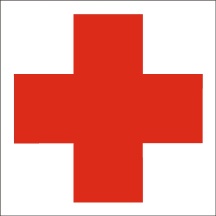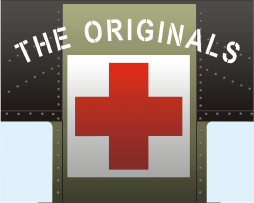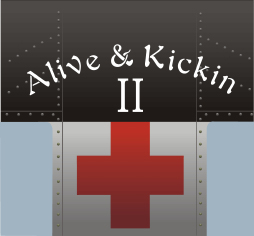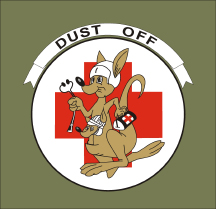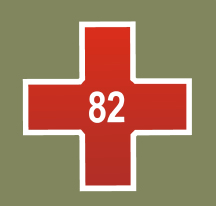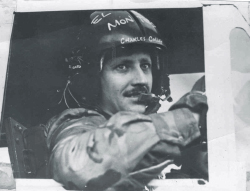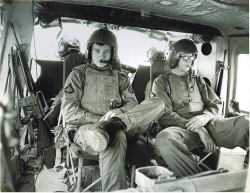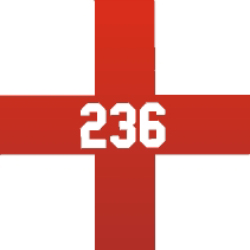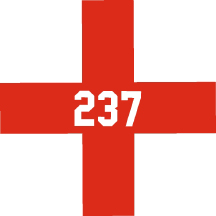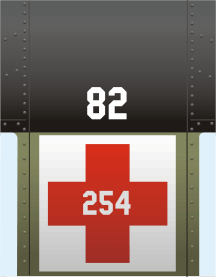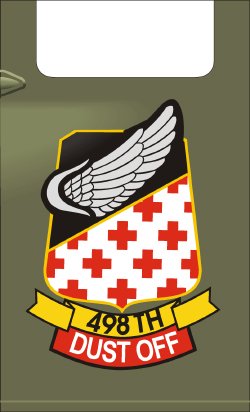 |
|||||||||||||||||||
|
|
|||||||||||||||||||
|
|||||||||||||||||||
| 57th Medical Detachment UH-1B, 1962-63 | |||||||||||||||||||
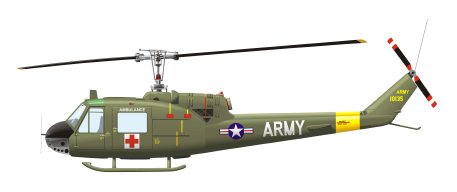 |
|||||||||||||||||||
| Click on illustration to see larger image, then click "back arrow" to return to this page | |||||||||||||||||||
|
The 57th Medical Detachment was the first helicopter
medical evacuation unit to arrive in Vietnam. They landed in Vietnam in
April, 1962. The 57th began operations at Nha Trang with three aircraft.
In January 1963, they were re-assigned to Soc Trang near Saigon to support U.S. and
Vietnamese operations in III and IV Corps. As additional UH-1Bs arrived, two
aircraft were detached to Pleiku to support operations in II Corps.
The 57th's first UH-1Bs flew with "high visibility" stateside markings. Simple red cross symbols were painted on the cargo doors and nose. The word "AMBULANCE" in white or yellow appeared above the cargo door window of some ships. |
|||||||||||||||||||
|
57th Medical Detachment UH-1B, 1964-65 |
|||||||||||||||||||
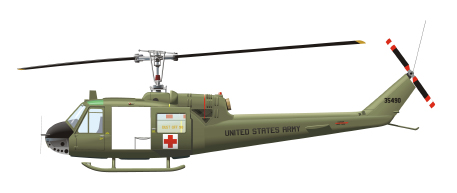 |
|||||||||||||||||||
| UH-1B of the 57th Medical Detachment as seen in 1964-65. Many of the high visibility markings have disappeared. The 57th originated "Dust Off" as a generic call sign for medical evac flights. This phrase "DUST OFF" appeared in yellow block letters on the cargo windows of 57th ships. Some 57th ships also added the ship number to the dust off sign on the cargo window. This appeared like "DUST OFF 90", the aircraft pictured above. | |||||||||||||||||||
| 57th Medical Detachment UH-1H 1969 | |||||||||||||||||||
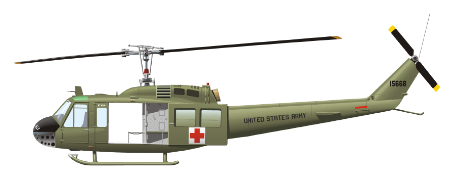 |
|||||||||||||||||||
| A UH-H of the 57th Medical Detachment as photographed in 1969. The skid tips are painted white. The unit designation "57 MED" is painted in small, white capital letters at the top of the smaller front cargo door. The legend "THE ORIGINALS" is painted on the nose over the red cross emblem. | |||||||||||||||||||
| 57th Medical Detachment UH-1H "White Elephant" 1972 | |||||||||||||||||||
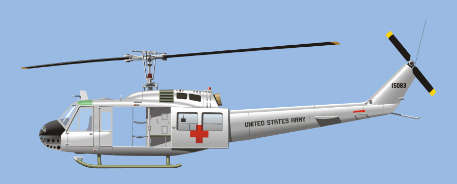 |
|||||||||||||||||||
| In 1969 the Defense
Department started a program with state agencies to provide
emergency medical personnel and medevac helicopters in response to
serious traffic accidents in the states. The program was called MAST
(Military Assistance to Safety and Traffic). Military
helicopters assigned to the MAST program were painted white with
large red crosses on the sides. The Medical Service Command in Vietnam got the idea that medevac helicopters were being shot at in Vietnam because they were olive drab and looked too much like other choppers. The order came down that some medevac helicopters should be painted white like the stateside MAST helicopters, and maybe the enemy would stop shooting at them! Needless to say, medevac units chosen to receive these white Hueys were overjoyed with this decision. The 57th Med Detachment began taking delivery of these white Hueys in January 1972. The flight crews quickly dubbed these aircraft "White Elephants". The nose retained the flat black paint, with the lower half of the nose painted white. The skids were OD, and 57th Med Hueys had white skid tips. The UNITED STATES ARMY legend and a/c tail number appeared in black as on standard OD aircraft. This particular Huey had "ALIVE & KICKIN II painted in white on the nose above the red cross. As expected, the NVA and VC targeted these white helicopters just as quickly as other choppers. |
|||||||||||||||||||
| 82nd Medical Detachment UH-1H, 1967-69 | |||||||||||||||||||
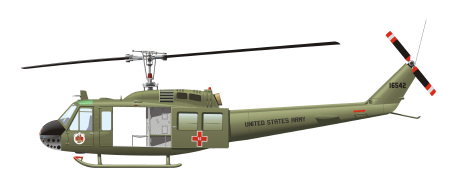 |
|||||||||||||||||||
|
By 1964 the 57th Medical Detachment was being overwhelmed
by demands being made on them by increased US and Vietnamese operations. At
one point the 57th had only two flyable aircraft! In response President
Johnson ordered the deployment of five new helicopter medical detachments to
Vietnam. The 82nd Medical Detachment at Fort Sam Houston was the first of
the new units to go to Vietnam, arriving in October 1964. They were
originally co-located with the 57th at Soc Trang so they could gain the
experience of the veteran unit. Once they were declared mission ready, the
82nd moved to Binh Thuy.
In 1967-69 82nd ships had a unique insignia painted on their pilot's doors (see insignia at left). The Red Cross insignia on the cargo doors and nose was also unique. The 82nd used a red cross design that outlined the cross in white, and completely deleted the white square background found on typical red cross markings. At least some 82nd ships also had the front ends of their skids painted red. |
|||||||||||||||||||
| 82nd Medical Detachment UH-1H, 1970 | |||||||||||||||||||
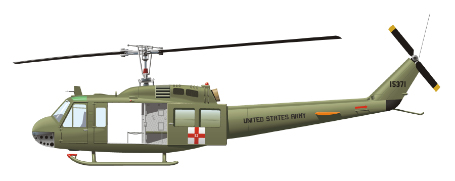 |
|||||||||||||||||||
| An 82nd Med Det
UH-1H as photographed in April, 1970. This ship shows several
differences in markings from earlier 82nd Hueys. The nose is
completely OD, and the red cross emblem has the traditional white
square background. The 82nd's unique door emblem is missing from
this Huey. The cargo door red cross is also different. It has a
white square background, and the cross arms reach to the edges of
the white square. The horizontal tail plane upper surface and outer
edge are painted orange. The stinger cover (rear end of tail boom)
is painted black. The call sign of this ship was "Dust-Off 82". The
pilot-in-command was CW2 Michael Lewis. This aircraft took hits in
the engine during a mission in April, 1970, and was forced to make
an emergency landing. There were no wounds or injuries to the crew,
and the helicopter was ultimately recovered and repaired.
Charles Coffee, a pilot with the 82nd Med Det, has a nice website about the unit at http://82ndmedicaldetachment.bravehost.com/index.htm . You can also click on the button below to link to his site. |
|||||||||||||||||||
|
|
|||||||||||||||||||
| 236th Medical Detachment UH-1H | |||||||||||||||||||
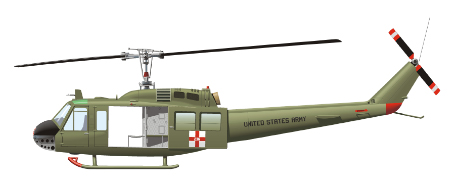 |
|||||||||||||||||||
| The 236th Medical
Detachment deployed to Vietnam from Ft. Polk, Louisiana in the fall
of 1968. The 236th was based at Da Nang in I Corps. They were
deactivated in March, 1972.
The 236th carried red cross insignias on the nose ant rear cargo doors. The arms of the red crosses extended to the edges of the white square background. The unit designation "236" was usually painted in the center of the cross. The tips of the skids were painted red. The stinger cover (the rear end of the tail boom) was also painted red. I have not seen photo details of the tails of 236th ships, so I'm not sure how the a/c number was displayed. |
|||||||||||||||||||
| 237th Medical Detachment UH-1H | |||||||||||||||||||
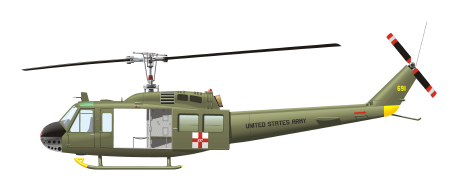 |
|||||||||||||||||||
|
The 237th Medical Detachment also served in I Corps. They
were based at Camp Evans, between Hue and the DMZ. Photos
show 237th aircraft with yellow-tipped skids (rear ends of skids were also
yellow). The lower rear end of the tail boom was painted yellow, as were the
last three digits of the aircraft serial number on the tail. The red cross
used by the 237th was thinner than many other typical logos, and the arms of
the cross went all the way to the edge of the white background. Veterans from the 237th Med Det have put together a nice unit website at http://www.dmzdustoff.org/ You can also click the button below to go to their site. |
|||||||||||||||||||
|
|
|||||||||||||||||||
| 254th Medical Detachment UH-1D, 1967 | |||||||||||||||||||
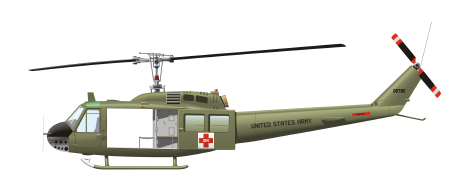 |
|||||||||||||||||||
| The 254th Medical Detachment served in southern II Corps. Fairly typical color scheme for med evac ships. Photos show that at least some 254th aircraft had the front ends of their skids painted white. The two-digits from the ship's call sign was painted on the nose above the red cross emblem. | |||||||||||||||||||
| 498th Medical Company UH-1D, 1967 | |||||||||||||||||||
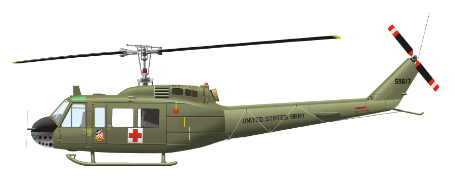 |
|||||||||||||||||||
| The 498th Medical
Company was deployed to Vietnam in 1966. It served in II Corps,
based at Nha Trang, but with separate platoons located at Qui Nhon,
Pleiku, and Ban Me Thout.
The 498th deployed to Vietnam with 25 UH-1Ds. Photos show some of these Hueys with tail boom antennas, as seen in this illustration. Aircraft had high visibility yellow and red markings on the fuselage. 498th ships carried a distinctive unit logo on the small front cargo door underneath the window. |
|||||||||||||||||||
| 498th Medical Company UH-1H, 1968 | |||||||||||||||||||
 |
|||||||||||||||||||
| In 1968 all UH-1Ds serving in medevac units in Vietnam were replaced by UH-1Hs, which due to its more powerful engine, could carry more wounded per trip (all remaining UH-1Ds were turned over to Army aviation companies for use as slicks and maintenance ships). This new UH-1H was photographed in 1968 with a platoon of the 498th. The distinctive unit crest is missing from the door of this ship. The stinger cover (the rear end of the tail boom) is painted white - at this time I'm not sure which platoon used this color. | |||||||||||||||||||
|
|
|
|
|||||||||||||||||
